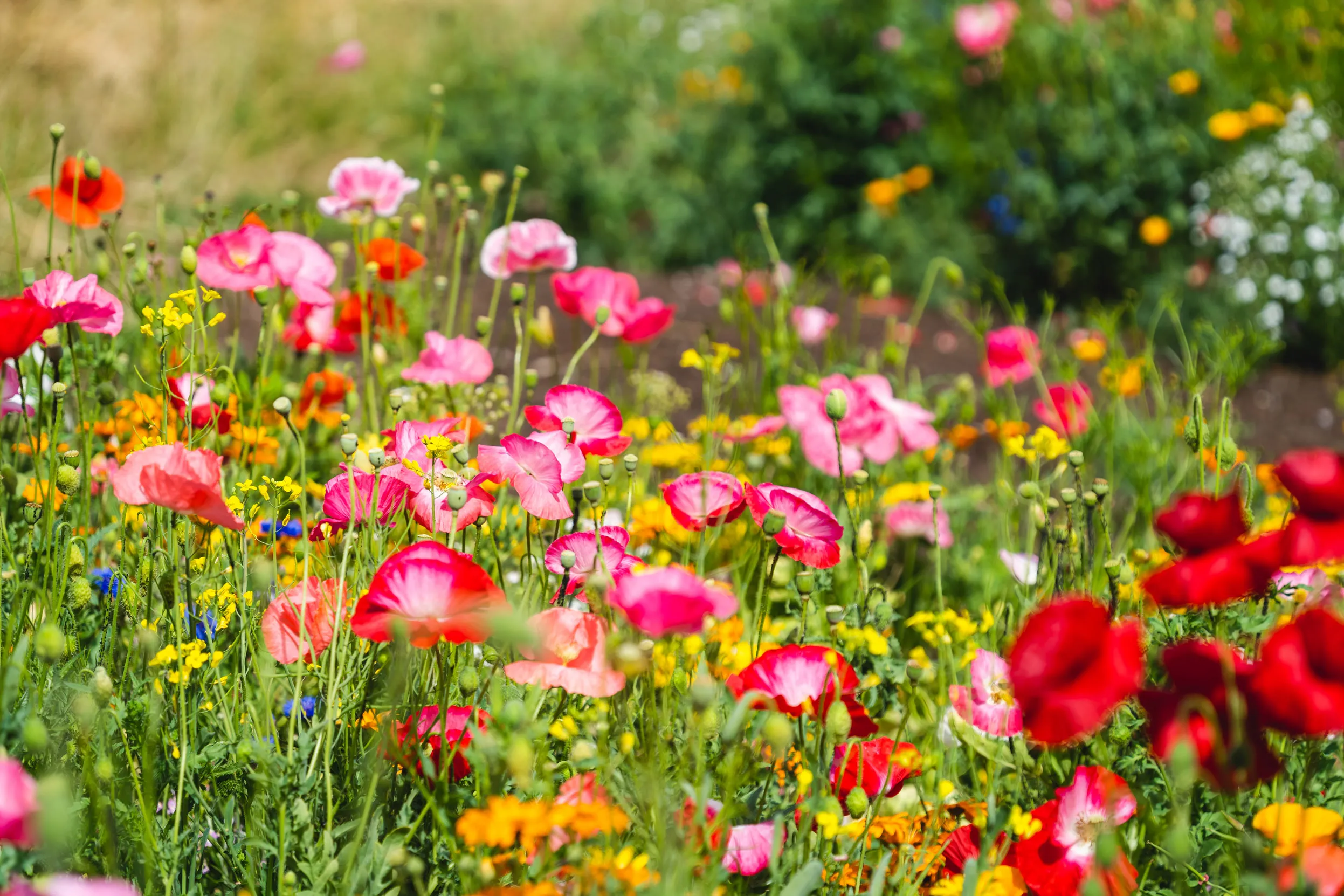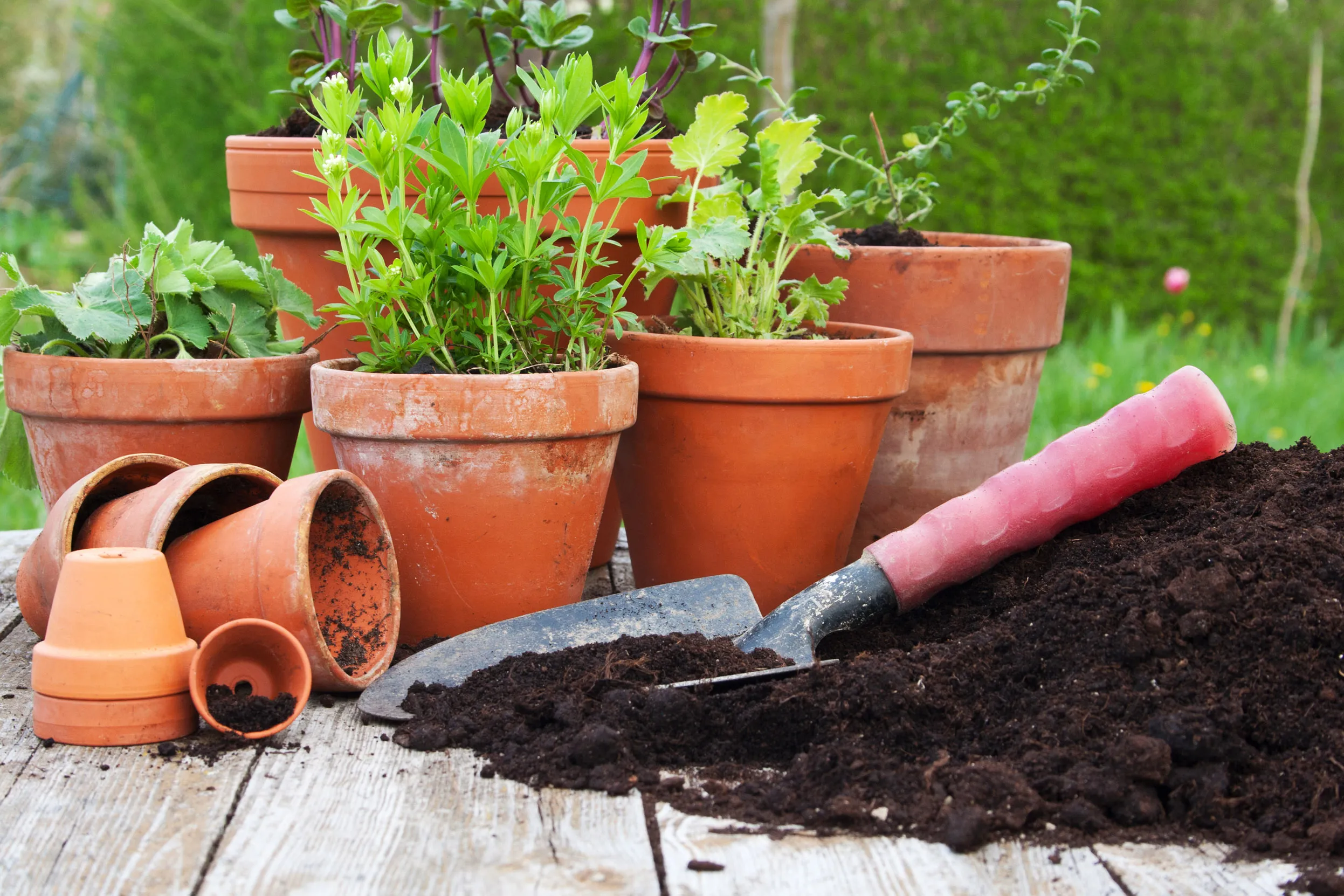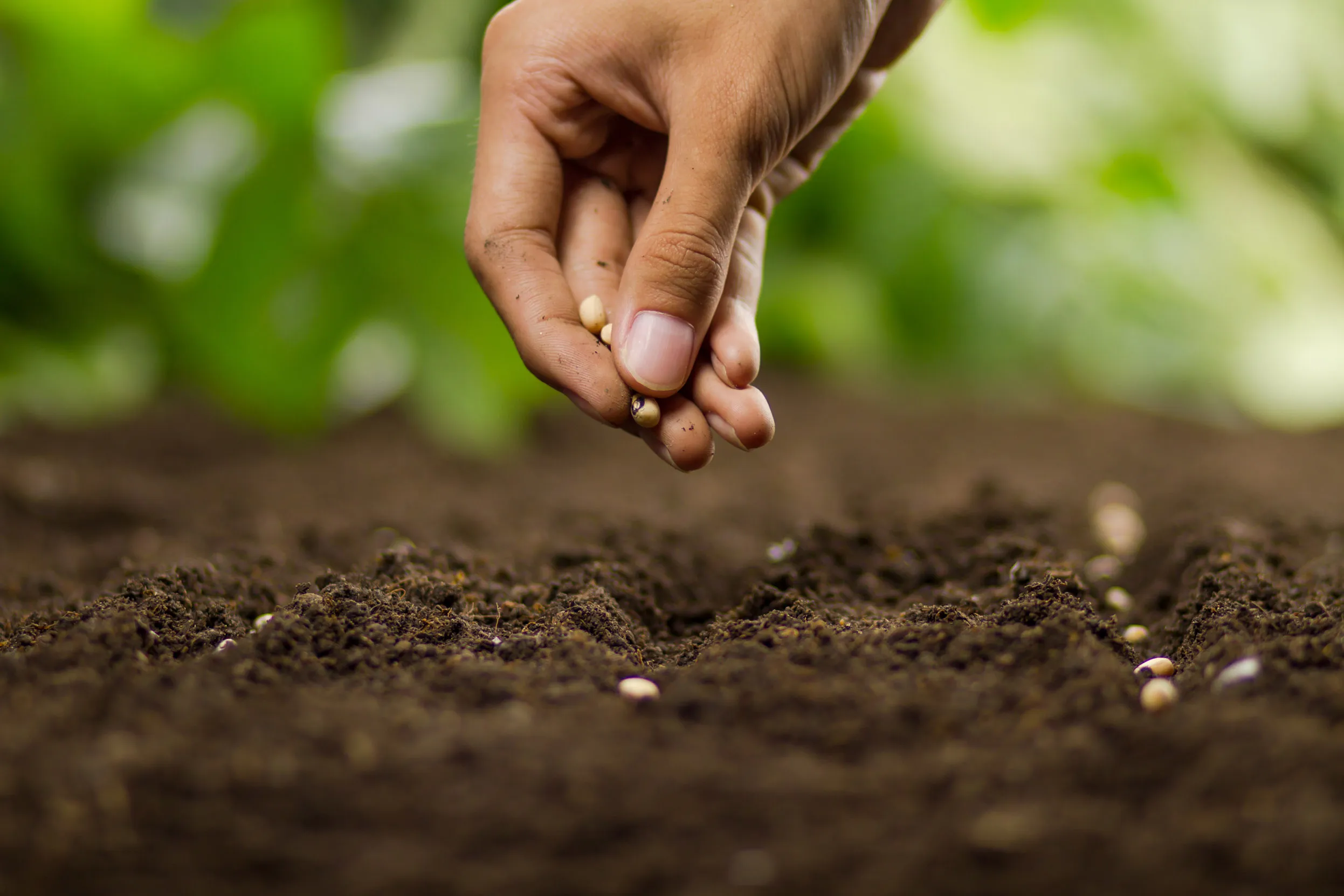Growing wildlife-friendly flowers
A wildflower meadow will create a lively feeding and nesting ground for insects, birds and small animals.

Growing wildlife-friendly flowers is a great way to give yourself and nature a boost, no matter how much space you’re working with.
If you have a balcony or windowsill, you could sow some seeds in a pot or window box. If you’ve got more room, planting a patch in your garden or even a whole wildflower meadow will do wonders for local wildlife.
Fast-growing annual plants like poppies, corn marigold and cornflowers grow from seed to a mass of flowers in a few months, providing a buffet for bees and butterflies, food for birds, and cover for other creatures. So why not have a go? Read on to find out how.
Instructions
Growing wildlife-friendly flowers in pots step by step
If you don’t have a lot of outdoor space – or even none at all – don’t panic. You can still grow flowers for nature. Try sowing your flower seeds in pots or window boxes.
Step one: Picking your pot
You can choose one big pot, or perhaps a series of smaller pots to add height difference to your display. Why not get creative with your containers and upcycle colourful metal tins or a Belfast sink? If you’re sowing into containers on a balcony, do check your building rules and ensure it can support the weight of the filled pots. And you can even grow annual flower mixes and wildflowers in window boxes or pots on your outside windowsill.
Step two: Creating the right conditions
If you’re sowing in containers, make sure your pot has drainage holes in the bottom. Pop a few pebbles or shards from an old broken pot into the bottom to aid drainage. Then simply fill your pot with peat-free compost, breaking up any clumps with your fingers. Gently smooth the surface without compacting the soil.
Step three: Sowing your seeds
Spread seeds thinly on the surface of the soil, before adding a sprinkling of compost, then pressing down gently with your hands and watering.
Step four: Looking after your pots
Keep watering your pots regularly, especially in dry weather when they can easily dry out.

Growing a wildflower patch or meadow step-by-step
Step one: Choosing a spot
Your meadow or patch needs to be somewhere open that’s sunny for most of the day. It can be flat or sloping. A relatively large area is best, where you have space for growing a mix of wildflower species. You can create a wildflower meadow from existing lawn.
Step two: Getting your soil into a state
Yes, you read that right. To start with, your soil is likely to be too rich for wildflowers, which need poor soil, especially if it’s had fertiliser added over the years. You can reduce fertility by removing the top three to six inches of topsoil, using a turf cutter or a spade and muscle-power. If you don’t want to strip the soil, you can reduce fertility by growing mustard plants from seed in the first year. Part of the brassica family, they’re very hungry plants and will remove some of the nutrients from the soil as they grow.
Step three: Weeding
Your patch or meadow needs to be free from weeds and raked to a fine tilth (like crumbs) before sowing. You can dig weeds out by hand or cover the soil with a few sheets of old cardboard or weed membrane for a few weeks – the lack of sunlight should kill most of them off. Once you’ve weeded, lightly dig the soil surface and rake it. Then, ideally leave it for a few more weeks in case the raking encourages more weed germination. Weed any seedlings out, and then you’re ready to sow.
Step four: Seeding
This is the fun bit. For best results, start in early spring or wait until autumn. You need about five grams of seed per square metre of meadow. You’ll be sowing wildflower seeds very thinly, so it's best to mix your seed with dry silver sand (the type used for block paving). Don’t use builders' sand as it’s not fine enough and is usually too damp. Pale-coloured sand helps you see where you've already sown and if you've missed anywhere. A good ratio is usually three-five parts sand to one part seed. Scatter the seeds as you walk across the ground. There's no need to rake the seed in or cover it with soil, but gently walk across it so that the seeds are in contact with the soil. You may need to cover it with netting to protect it from birds. Water the seeds and keep them well-watered in the first year, especially during dry spells.

Step five: Mowing
You’ll need to mow your patch or meadow every now and then to keep it thriving. After your meadow has flowered, seedheads should form (usually from midsummer through to autumn.) Once they have formed, wait until dry weather is forecast for a few days and cut the growth back. Leave cuttings to dry on the ground for two days to allow seeds to fall into the soil. After a few days, remove the dried material. By varying the time you mow each year, you can help stop certain plants dominating. If you're cutting early (e.g. in July), leave an area uncut as a grasshopper refuge as this is when their young (called nymphs) are most vulnerable.
Step six: Enjoy!
Your meadow will evolve year by year, attracting more and more creatures. You should see bees, butterflies and grasshoppers, if you’re lucky. Birds should feed there, too, and bats may fly over the top.